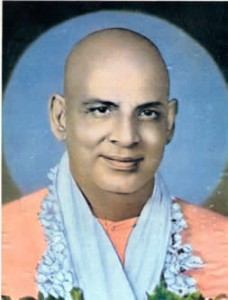Yoga with Joanna
Joanna teaches Sivananda inspired hatha yoga according to Ayurvedic principals. Sivananda yoga has a complete approach with pranayama, sun salutes, inversions, forward bends and backbends, twisting, balancing and standing poses, chanting, and a full final relaxation (which is when the Ayurvedic doshas are balanced by your practice). This style of Yoga was brought to the West by Swami Vishnu devananda. His guru, Swami Sivanada wanted yoga to spread out from India. His basic philosophy was to aim for “simple living and high thinking”. She is also drawn to restorative yoga as we all push ourselves too hard, so the yoga mat is one place to nurture and restore. Sivananda Yoga is based on 5 points taught by Swami Vishnu Devananda
She has also trained with many inspirational teachers including:
- Yoga therapy for lower back pain, Dr Robin Monro, Yoga Biomedical Trust
- Pregnancy Yoga, Uma Dinsmore Tuley
- Ayurvedic Yoga, Mukunda Stiles
Yoga hasn’t survived so many thousands of years because ‘it is good for you’ but because ‘it makes you feel good’. The only way to test this is to try it out for yourself. If you’ve been put off in the past, try a different teacher or style of yoga. Whatever yoga you practice, at all times focus on being present, using the breath with each movement and finding your ‘edge’ (the point at which you can feel the effects of the posture, without it being painful AT ANY POINT!)
What is Yoga?
‘Yoga’ is derived through the Sanskrit word for ‘union’ and represents the union of the individual soul with the universal soul, and of the body with the mind. The Indian sage Patanjali is believed to have collated the practice of yoga into the Yoga Sutra an estimated 2,000 years ago. His Yoga Sutras serve as a guide for yoga that is practiced today, outlining the eight limbs of yoga: yamas (restraints), niyamas (observances), asana (postures), pranayama (breathing), pratyahara (withdrawal of senses), dharana (concentration), dhyana (meditation), & samadhi (liberation).
“Yoga is the calming of the thoughts. It is the cessation of the fluctuations of consciousness.” (Yoga sutras of Patanjali, Chapter One, Verse One)
Today most people practicing yoga are engaged in the third limb, asana, physical postures designed to purify the body and provide the physical strength and stamina required for long periods of meditation. The fourth limb, pranayama (breath control) is also practiced in the West.
‘Hatha’ yoga is used to describe these practices, and is translated as ha ( “sun”) and tha (“moon”). This refers to the balance of masculine aspects (active, hot, sun) and feminine aspects (receptive, cool, moon) within. Yoga is a powerful tool for personal development, creating balance, strength and flexibility of body and mind. It also teaches us how to balance effort with knowing when to accept and surrender to current circumstances.
Some of the benefits of Yoga:
- Enhanced intellect, increased efficiency and reduced stress levels
- Greater contentment, concentration and mental steadiness
- Enhanced feelings of well-being and general vitality
- Improved circulation and hence detoxification
- A greater connection with the body’s and mind’s genuine needs
- Living a life with a deeper consciousness, integrity and joy
- Help with chronic illness eg: asthma, diabetes, arthritis (through tailored Yoga Therapy)
It’s important to remember yoga is not just theory, nor physical postures to practice on your mat, but is a practical way of life to help you find inner peace. Yoga is also about a life of compassionate self-discipline, both on and off your yoga mat, with the aim of ‘simple living and high thinking.’ This real goal of Yoga is to understand that true happiness comes from within, when the mind is free from endless thoughts. As such, Yoga is universal in nature, and is for everybody regardless of age, gender, physical ability, or religion. Yoga is not a religion, but is a framework for spiritual growth and the integration of body, mind and spirit.
“An ounce of practice is worth a tonne of theory.” (Swami Sivananda)
Ayurvedic Yoga?
A well-rounded Yoga practice should be tridoshic by nature (balancing for all Ayurvedic types) and can accommodate any constitution or imbalance. For example:
- Vata types should focus on slow Sun Salutes; leg lifting; Camel; Cobra; and Cat. Alternate nostril breathing can help balance Vata. Beyond Yoga, slow, gentle exercise such as Tai Qi, QiGong, swimming, and walking are recommended rather than active sports such as jogging.
- Pitta types benefit from cooling Moon Salutes; Fish; Boat; and Bow. Cooling shitali breaths can help with heat, irritation, inflammation and anger. Calming exercise, Tai Qi, Aikido, hiking or swimming are all recommended, avoiding intense competitive sports and hot mid-day exercise.
- Kapha types need fast Sun Salutes and postures such as Bridge; Peacock; Tree; and Lion. Bhastrika pranayama and Kappalabhati are good. Any vigorous hot exercise, especially early morning is excellent.
Click here for an excellent introduction to combining Ayurveda and Yoga from Dr David Frawley and Banyan Botanicals.
“The real spiritual progress of the aspirant is measured by the extent to which he achieves inner tranquility.” (Swami Sivananda, pictured)

